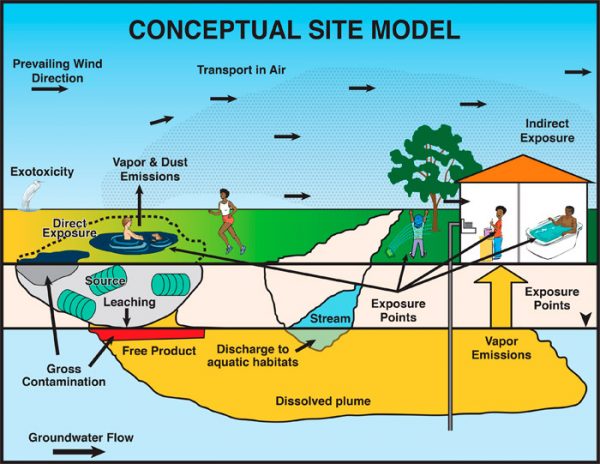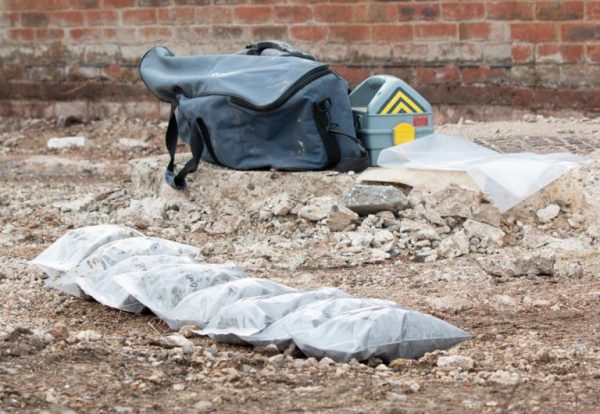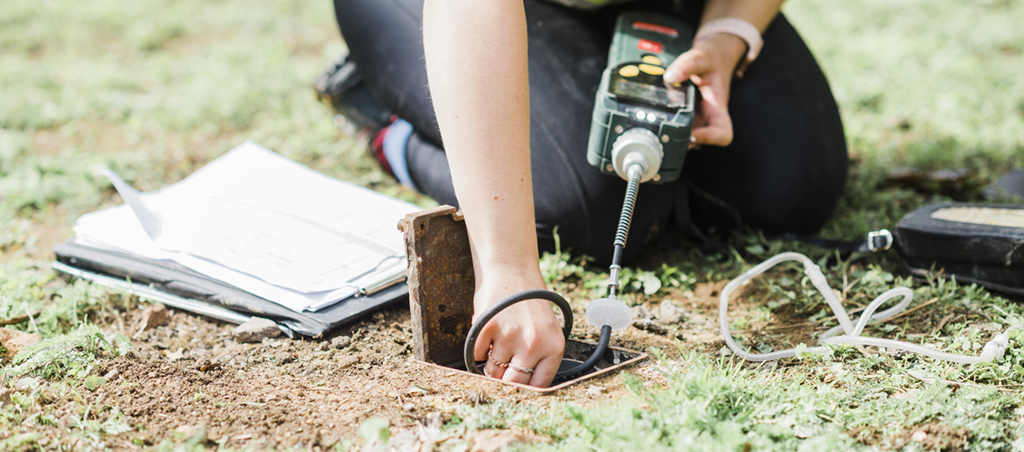Risk Assessment Awareness
Geoenvironmental
Entering any working environment straight out of university, qualifies for a risk assessment in its own right! But as Emily Murray, a graduate engineer at Ground & Water found out, some early and targeted professional development was far preferable to naively thinking she had all the theoretical and practical knowledge she needed.
I quickly learnt after joining Ground & Water that a fundamental part of being a graduate engineer, is developing the skills to understand and implement a risk assessment. The Conceptual Site Model (CSM) is highly significant in this process, enabling the identification of potential sources of contamination from previous site uses, their pathways and the potential receptors, including human health and groundwater. The principle aim of the CSM is to provide information pertinent for designing a suitable sampling strategy that is required in the subsequent site investigation. For example, the CSM would need to determine the degree of risk to the proposed end use of the site (I.e. Is it residential or commercial?).
 A conference organised by SoBRA and RemSoc in June 2019 and targeted at early career professionals; aimed to provide guidance to improve risk assessments from the desk study through to the ground investigation. Some of the points explained here may seem obvious to the more experienced geotechnical and geoenvironmental engineers reading this, but the points covered during the event, can easily be overlooked by graduate engineers, who have recently entered the industry.
A conference organised by SoBRA and RemSoc in June 2019 and targeted at early career professionals; aimed to provide guidance to improve risk assessments from the desk study through to the ground investigation. Some of the points explained here may seem obvious to the more experienced geotechnical and geoenvironmental engineers reading this, but the points covered during the event, can easily be overlooked by graduate engineers, who have recently entered the industry.
If the risk assessment has clearly defined the risks, an appropriate strategy for the site investigation can be devised. If these objectives are not clearly defined, inappropriate conclusions can be drawn and unnecessary, inadequate, recommendations implemented.
An example SoBRA used in its presentation, related to sample collection and its use in the risk assessment. For a site which is being redeveloped, it is highly likely that sampling for asbestos within deep natural strata is not relevant, whereas testing a shallow sample from the Made Ground would provide more information and be more appropriate.
 While logging trial holes, you could fill a sample jar with gravel and stones, but this doesn’t provide information regarding the finer particle fractions. These finer fractions are of relevance when looking at dermal contact, soil ingestion and inhalation of dust as they readily adhere to the skin and can then be ingested; whereas this is less of a concern with stones. The saying ‘a picture is worth a thousand words’ has never been more true. Although not all contaminants are visible, the use of photography can help provide evidence as to why a particular sample was sent for analysis (i.e visual contamination). The sampling of soil, water and ground gas/vapours, should be considered one of the most important stages of any ground investigation. If the sampling has been completed incorrectly or if the samples have been incorrectly stored, in inappropriate containers for example, the final conceptual model can significantly underestimate the risks and the risk assessment would be considered inadequate.
While logging trial holes, you could fill a sample jar with gravel and stones, but this doesn’t provide information regarding the finer particle fractions. These finer fractions are of relevance when looking at dermal contact, soil ingestion and inhalation of dust as they readily adhere to the skin and can then be ingested; whereas this is less of a concern with stones. The saying ‘a picture is worth a thousand words’ has never been more true. Although not all contaminants are visible, the use of photography can help provide evidence as to why a particular sample was sent for analysis (i.e visual contamination). The sampling of soil, water and ground gas/vapours, should be considered one of the most important stages of any ground investigation. If the sampling has been completed incorrectly or if the samples have been incorrectly stored, in inappropriate containers for example, the final conceptual model can significantly underestimate the risks and the risk assessment would be considered inadequate.
The report SoBRA and ALS, 2019. Practical Tips to Share: Improving Risk Assessment- Field to Desk and the advice it provides, is highly informative on this subject, is easy to understand and well worth a read; especially for someone like myself who has just joined the industry.
While reviewing this document, a particular point stood out… Make sure to stop and check! It is all too easy to get so wrapped up in the detail of the current task and let the overall objectives of the site investigation to be pushed aside. Therefore, it is crucial to continually remind yourself to revisit the CSM and update it (if required) and ensure the data is of sufficient, relevant quality ensuring the objectives of the investigation are met.
